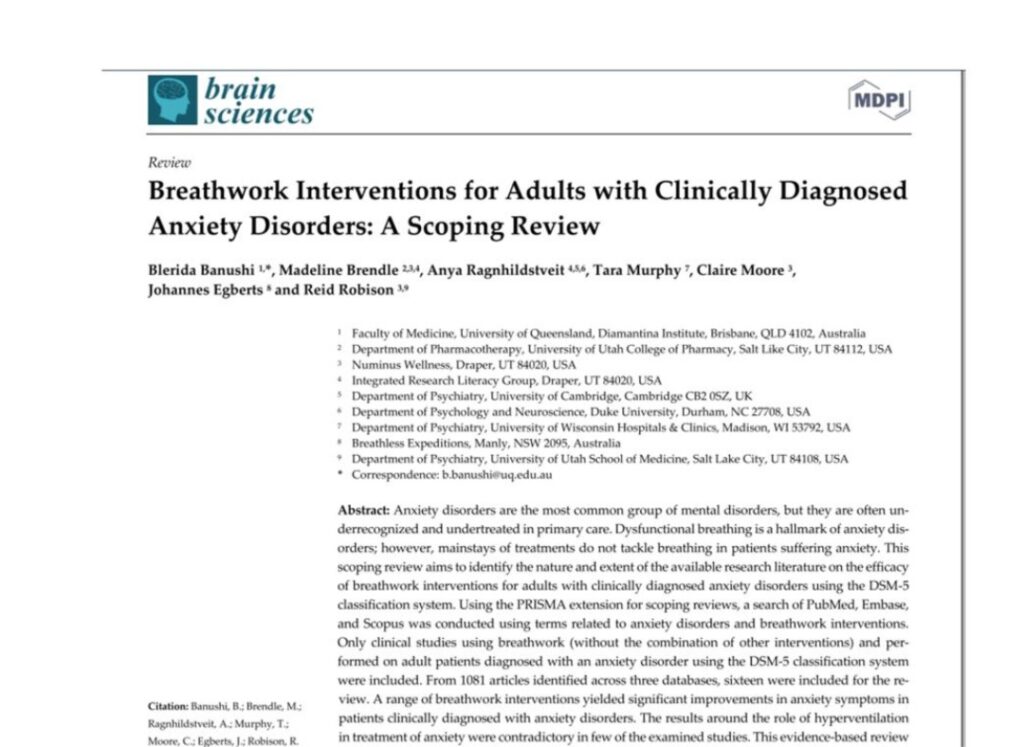Breathing Resources
Breathwork Interventions for Adults with Anxiety Disorders

People with anxiety can often underestimate and underutilise breathing techniques in managing their anxiety. This systematic review looks at 16 studies that used some type of breath work as a stand-alone therapy for anxiety sufferers.
Slow breathing was found to be consistently effective for activating the body’s relaxation response and for increasing vagal tone. The positive effects of slow breathing are sometimes enhanced by HRV biofeedback.
Hyperventilation with low CO2 is a common finding in people with anxiety and panic disorders. Breathing techniques that teach people how to control their breath to gradually raise their CO2 over a period of months can be a game changer for anxiety and panic disorder.
Regular practice of these reduced relaxed breathing techniques can have a powerful stabilising and calming effect on breathing and the brain and nervous system.
It is probably surprising to some people to learn that deliberate faster and deeper breathing utilised in a range of structured breathing practices was also effective in improving mood and reducing anxiety.
There is still a lot of research needed to fully understand why breathing is so effective for managing rewiring the brain in anxiety and stress and finding the best techniques for any individual depends on some trial and error.
The process of finding what is effective is helped by having a teacher who understands breathing who can guide you in ways to integrate breath with mind-body practices into your daily life in ways that will work best for you.
Read the full article here: Banushi, B., et al., Breathwork Interventions for Adults with Clinically Diagnosed Anxiety Disorders: A Scoping Review. Brain Sciences, 2023. 13(2): p. 256
